Customer feedback is the linchpin that holds the door open to insightful, actionable business strategies. However, collecting this gold mine of data isn't always a walk in the park.
Between the sheer volume of customers and the myriad of communication platforms, it's easy to get lost in translation. Moreover, customers are often reluctant to share their experiences unless the process is quick, easy, and, preferably, rewarding.
This is where choosing the right feedback channels can revolutionize your approach, making it not just a necessity but a seamless part of your customer engagement strategy.
Below, we've outlined the top 7 customer feedback channels that can transform your business by providing a clearer, more direct line to your customer's thoughts and feelings;
- Customer Feedback Tools
- Focus Groups
- Online Reviews & Social Media
- User Testing
- Email Campaigns
- Feedback Forms
- Live Chat
1. Using a Customer Feedback Software
Talking about hassle-free feedback collection, feedback software comes to mind as the top solution. These tools are your one-stop-shop for collecting, analyzing, and acting on customer feedback.
With embeddable features and white-labeling options that feel like an extension of your brand, customer feedback management software like Crumble elevate the user experience by leaps and bounds.
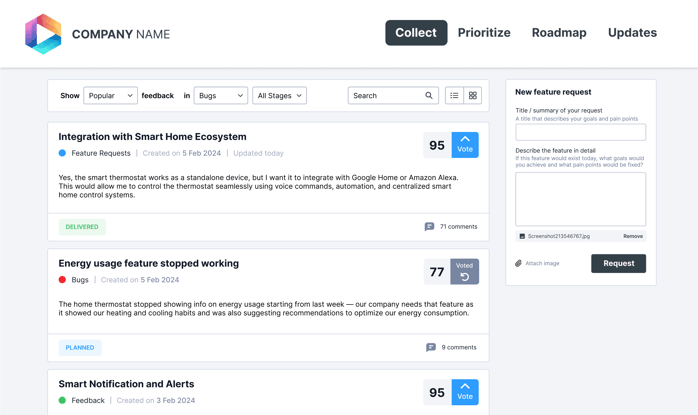
Source: www.gocrumble.com
This streamlined approach increases the likelihood of receiving genuine, valuable insights from your customers. Why? Because when giving feedback feels this natural, your customers are more inclined to share their thoughts.
How?
- Capture Feedback:
The right software could collect feedback, feature requests, product upvotes and bug reports through emails, customer support systems & social media for you. - Prioritize:
No more piled-up feedback. Tools like Crumble categorize all the feedback and prioritize where your focus and energy need to be. - Create Product Roadmap:
Crafting the perfect product begins with the voices of those who matter most – your customers. Now that you have the knowledge and insight, begin creating a product roadmap that resonates with your customers’ needs. - Close the Loop:
Communicate the upcoming changes to your customers to ensure they feel their opinions are valued, fostering trust and transparency.
Backed by Clinked’s 15+ years of experience and recognition as a software leader, Crumble ensures every piece of feedback is heard and translated into innovation and meaningful actions.
2. Focus Groups
Diving deep into the psyche of your customer base, focus groups offer rich, qualitative insights that other methods could fall short of.
Though it can be harder to execute - and more 💰- by gathering a diverse group of people to discuss your product or service, you get a multi-dimensional view of your customer's experiences in a controlled and measurable environment.
How?
- Recruit Participants: Identify and recruit a diverse group of participants that represent your target customer base.
- Design the Discussion: Prepare a list of open-ended questions or topics that encourage participants to discuss their experiences and views.
- Choose a Moderator: Select a skilled moderator who can guide the conversation, ensuring that every participant has a chance to speak and are asked the right questions.
- Conduct the Session: Host the focus group in a comfortable setting, facilitating an open and honest dialogue.
- Analyze and Apply Feedback: Review the discussions for recurring themes and actionable insights that can inform business strategies.
3. Online Reviews & Social Media
Online reviews and social media play a pivotal role in shaping consumer behavior today, with 93% of consumers stating that online reviews influence their purchasing decisions. Platforms such as Yelp, Google Reviews, and social media sites like Facebook and Twitter have become invaluable resources for customers to express their opinions and experiences with products and services.
By encouraging satisfied customers to share their positive experiences online, companies can enhance their reputation and improve user acquisition. Conversely, addressing negative reviews promptly and thoughtfully can demonstrate a commitment to customer service, potentially turning dissatisfied customers into loyal ones.
Leveraging the power of online reviews (integrating Google Reviews to your website, for instance) and social media feedback can thus be a strategic tool for businesses to build trust, improve their offerings, and ultimately drive growth.
How?
- Monitor Platforms Regularly:
Use marketing tools to track mentions of your brand across social media and review sites. - Engage with Customers:
Respond to reviews and comments promptly, thanking customers for positive feedback and addressing any complaints constructively. - Encourage Reviews:
Ask satisfied customers to leave a review on popular platforms, enhancing your online presence and reputation. - Analyze Feedback Trends:
Look for common themes or issues mentioned in reviews to identify areas for improvement.
Read More: Additionally, remember to leverage automation tools to simplify your tasks. For example, if you need to respond to multiple people on Instagram for their comments, consider using an Instagram DM automation to streamline your efforts.
4. User Testing
User testing not only identifies areas where users may encounter issues or become frustrated but also highlights aspects of your offering that resonate well. By observing users as they navigate your product or interface, you gain invaluable insights into both the successes and potential barriers within your user experience.
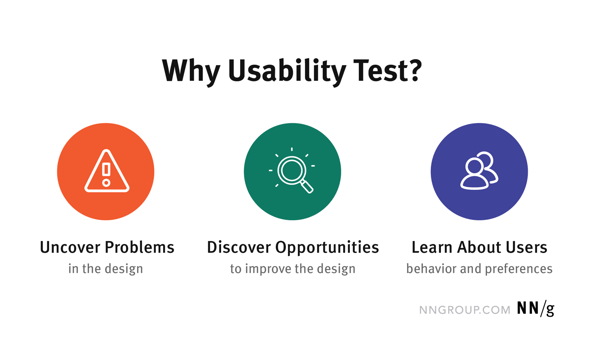
Source: www.nngroup.com
This feedback is critical for fine-tuning your design, functionality, and overall user strategy, ensuring that your product not only meets but exceeds user expectations. Through detailed observations, direct user feedback, and subsequent analysis, user testing facilitates a continuous cycle of improvement and innovation, ensuring your product remains aligned with user needs and preferences.
- Define Objectives:
Clearly outline what you hope to learn from the user testing sessions. - Select Participants:
Choose users that closely match your target audience demographics. - Create Testing Scenarios:
Develop tasks or scenarios that participants will undertake, simulating real-world use of your product or service. - Gather Feedback:
Encourage participants to think aloud as they complete tasks and provide feedback on their experience. - Analyze Results:
Review the feedback for patterns and insights that can guide product improvements.
5. Email Campaigns
Email campaigns are a powerful tool for direct communication with your customer base, offering both a high response rate and the opportunity to collect rich, detailed data. By carefully crafting personalized email messages that resonate with recipients, businesses can encourage customers to provide feedback on their experiences with products or services.
 Source: unlayer.com
Source: unlayer.com
These campaigns can be tailored to target specific segments of your audience, allowing for more relevant and engaging content that prompts higher engagement rates. By analyzing the feedback gathered from email campaigns, businesses can make data-driven decisions to enhance customer satisfaction and loyalty.
How?
- Segment Your Audience:
Tailor your email campaigns to specific customer segments based on their purchase history, behavior, or demographics. For example, while the questions you would ask one-month-old customers would be more general, the questions you ask to long-term, repeat customers could be more in depth. - Craft a Clear Call-to-Action:
Design your emails with a clear, compelling call-to-action asking for feedback. - Follow Up:
Send a personalized thank-you email to participants and share how their feedback will be used to improve your products or services.
Pro Tip: Increase participation by offering an incentive, such as a discount or entry into a giveaway.
6. Feedback Forms on Website or App
Embedding feedback forms directly on your website or app, is a strategic approach to ensure that customers can easily share their thoughts and experiences at the very moment they are engaging with your product.
 Source: www.jotform.com
Source: www.jotform.com
This immediate and accessible method allows businesses to capture the voice of the customer in real-time, providing direct insights into user satisfaction, usability issues, and areas for product or service enhancement.
Moreover, these forms can be designed to capture specific information relevant to the business's objectives, such as user experience, feature requests, or overall satisfaction levels.
Just a quick reminder: You can utilize a variety of platforms and locations to place customer feedback forms—including your website, web portal, mobile apps, emails, and even digital business cards—to gather insights and improve your services.
How?
- Identify Key Interaction Points:
Place feedback forms where customers are most engaged, such as after a purchase confirmation or on the support page. - Keep It Simple:
Design forms that are easy to complete, with a few targeted questions to maximize response rates. - Follow-up:
Follow up first by acknowledging their contribution and then, more importantly, by communicating the improvements you have made based on their feedback. Tools like Crumble are designed to streamline this communication, making sure your customers feel valued and heard.
Pro tip:
7. Live Chat
Live chat represents a fusion of real-time interaction and the ease of digital communication, establishing a direct and personal connection with customers.
Implementing live chat on your website or app not only provides customers with instant support but also serves as an invaluable tool for gathering real-time feedback, allowing businesses to stay responsive to their customers' needs and preferences.
How?
- Integrate onto Your Website or App:
Once you choose a relevant software provider, embed the live chat option to your website or within your app. (Make sure to pay attention to customization capabilities when choosing a software) - Set Availability Hours:
Define the hours when live chat will be available to customers. If 24/7 support isn't feasible, consider using chatbots to answer basic queries outside of business hours. - Monitor and Respond to Chats:
Ensure your team is ready to respond to incoming chats promptly. Quick responses are crucial for maintaining customer satisfaction and making the most of the real-time aspect of live chat. - Analyze Chat Histories and Feedback:
Regularly review chat transcripts and customer feedback to identify areas for improvement. Use these insights to refine your approach to customer service and to enhance your products or services.
Here’s How You Stand Out
Responding to every piece of feedback is crucial in properly closing the feedback loop, showing your customers that their voices matter and transforming their insights into tangible improvements. By doing so, you foster a culture of trust and loyalty that can transform neutral or negative experiences into positive ones and will pay dividends in customer satisfaction and retention.
What to Focus on While Responding to Feedback:
Acknowledge: Begin by acknowledging the customer's effort in providing feedback and thank them, regardless of whether the feedback is positive or negative.
Personalize Your Response: Tailor your response to the specifics of the feedback. Use the customer's name and reference particular points they made to show you’ve truly listened.
Offer Solutions, Not Excuses: For negative feedback, focus on offering solutions or steps you will take to address their concerns. Avoid excuses and instead commit to making improvements.
Invite Further Dialogue: Encourage customers to continue the conversation if they have more to say or if they’re not satisfied with the resolution. Provide a direct contact for further discussions.
Offer a Variety of Communication Channels: Offer a variety of channels, such as email, phone, social media, and live chat, ensuring they can reach out through the medium most comfortable and convenient for them. You can even make use of a text-to-speech API if the customer prefers not to speak, offering an accessible and user-friendly communication option.
Highlight Changes and Improvements: When relevant, share how customer feedback has led to specific changes or improvements in your product or service. This reinforces the value of customer input.
Maintain a Positive Tone: Always keep your responses professional and positive, even in the face of criticism. Visit our article on 8 psychological tips to enhance client communication to find out more.
Conclusion: Using Customer Feedback Channels
For businesses pursuing growth, tapping into customer feedback is now indispensable, rather than merely optional.
The seven customer feedback channels outlined above offer a spectrum of opportunities for businesses to connect with their customers on a deeper level. From the direct insights of user testing and focus groups to the broad reach of social media and online reviews, each channel has its unique strengths. Tools like Crumble further streamline this process, making it easier than ever to collect, analyze, and act on customer feedback.
Remember, the goal is not just to “hear” but also carefully “listen” to understand and implement changes that drive satisfaction, loyalty, and ultimately, business success.
After all, crafting the perfect service begins with the voices of those who matter most – your customers.



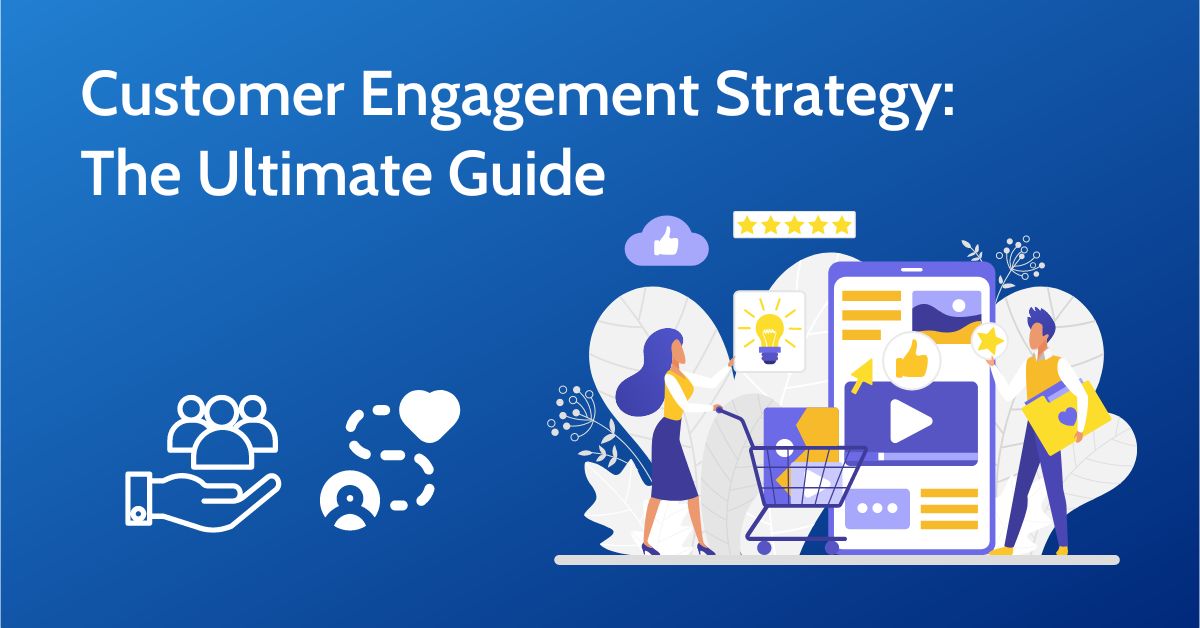

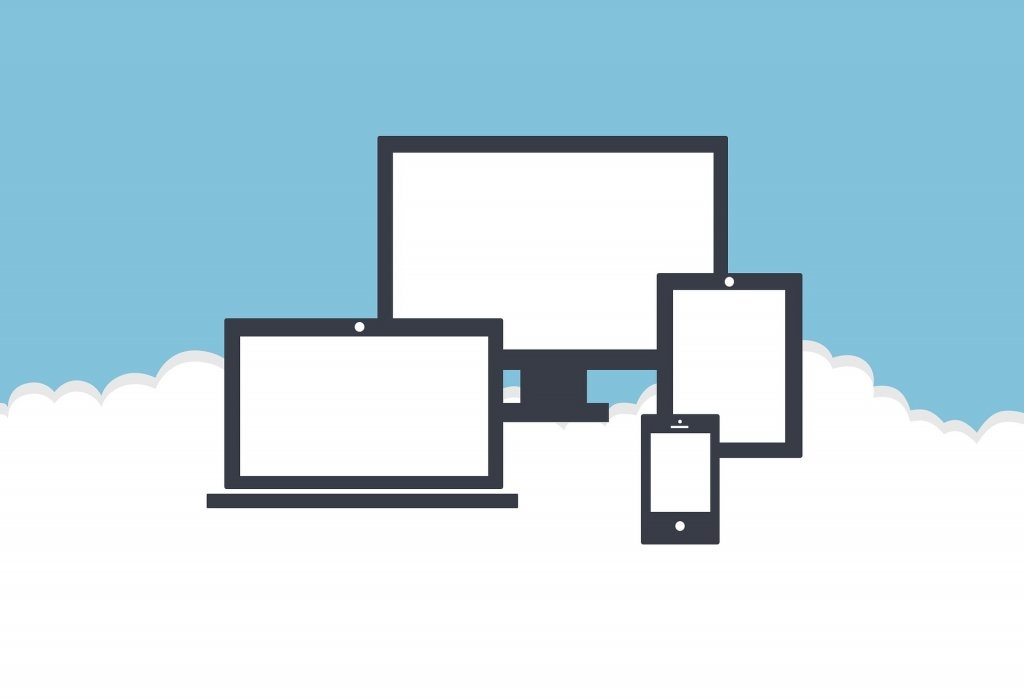
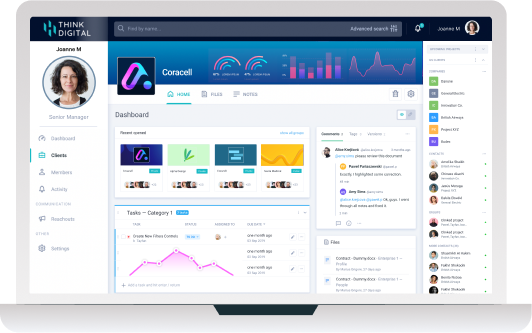

Let Us Know What You Thought about this Post.
Put your Comment Below.